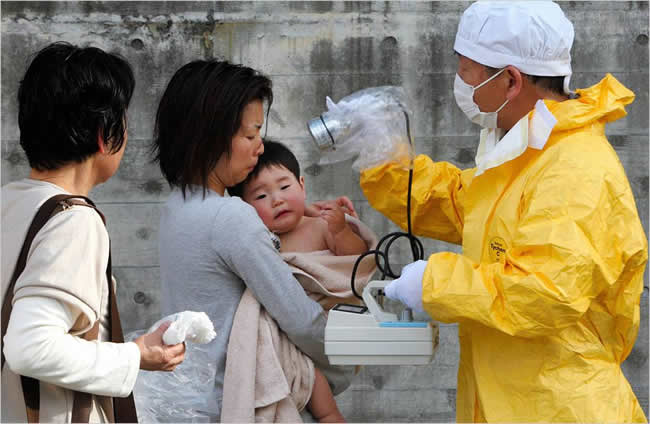From The Times February 17, 2010
New nuclear reactors might not stand up to terrorist attacksRobin Pagnamenta, Energy Editor
One of the two new nuclear reactor designs being considered for use in Britain may not be strong enough to withstand a direct hit from a commercial airliner, which could stop the technology being licensed in Britain, the UK’s nuclear safety watchdog said yesterday.
The claim from the Nuclear Installations Inspectorate (NII) that the design could be vulnerable to terrorist attacks is a blow for the American-Japanese group that is behind the AP1000 reactor type.
Toshiba-Westinghouse sees the UK as a significant growth market and hopes that the technology can play a big role in plans to build a new generation of nuclear power stations in Britain.
But yesterday the NII raised its concerns in an official letter, which insisted that Toshiba-Westinghouse provide fresh evidence that the design was sufficiently strong to withstand “external shocks” before it could be considered for a UK licence.
Pressure on to hasten nuclear construction
Germans to invest £20bn in UK nuclear plants
Kevin Allars, the NII director responsible for a detailed safety review of the two reactor technologies earmarked for Britain — the AP1000 and the EPR, a French design from Areva — told The Times that any new reactor must be able to “withstand an external shock, such as an earthquake, extreme weather or a strike from an aircraft”. He said that the standards were contained in the NII’s Safety Assessment Principles, set by the security services.
The NII, he said, was concerned that a new design method proposed by Toshiba-Westinghouse, aimed at speeding up construction and cutting costs, could mean that the reactor’s exterior concrete shell would be less robust than a conventionally built nuclear power plant.
The letter said that Toshiba-Westinghouse’s proposed “modular” approach to construction, where large components are built off-site and then transported in for assembly, was not proven. It raised questions about the strength of the external fabric of the building, which uses a concrete and steel sandwich structure. Traditional methods, adopted by the EPR, involve reinforced concrete is poured in situ.
Mr Allars expressed confidence that the concerns could be resolved. “This is not a showstopper. But we need to resolve these concerns before we can proceed.”
Mike Tynan, chief executive of Westinghouse UK, acknowledged that there was “a significant amount of work that needs to be done” to secure a licence and said it was right that the AP1000 design should be subjected to rigorous scrutiny. The company said that ten AP1000 plants were already on order, four in China and six in the United States.
Horizon Nuclear Power, a joint venture between E.ON and RWE, is considering ordering the AP1000 for two new nuclear stations at Oldbury, in Gloucestershire, and Wylfa, on Anglesey. Each reactor is expected to cost up to £4 billion to build.
Mr Tynan said that the letter was part of a normal regulatory procedure. “The matters highlighted are not new and we have been working with the regulators for some months towards a plan to provide them with the assurances and information they need.” He believed that this could be achieved by mid-2011.
Analysis: Robin Pagnamenta
The Government may have given a green light to new nuclear power plants two years ago, but it will be the end of 2017 before the first one starts to generate electricity — and even then, only if everything runs like clockwork.
It is not merely the huge costs and the planning disputes that are holding things up. The industry regulatoris in the midst of a titanic effort to approve two new reactor designs for use in the UK. Neither of these is yet generating electricity anywhere in the world, intensifying the drive to make sure they will be safe and reliable for decades to come.
Dozens of nuclear engineers are now employed full-time by the NII on the project, as well as dozens of support staff and contractors. But it will still be 18 months before either design can be approved.
The concerns expressed by the NII yesterday about the strength of the AP1000 reactor casing are a part of this process and the obligation now rests on Toshiba-Westinghouse to persuade the regulator that its design is safe.
Only after the NII has granted a reactor licence can EDF, RWE and E.ON, the energy companies that want to build reactors in the UK, submit a proper planning application for the sites they have selected. The first concrete will not be poured before 2013.
Wednesday 17 February 2010
Subscribe to:
Post Comments (Atom)





No comments:
Post a Comment